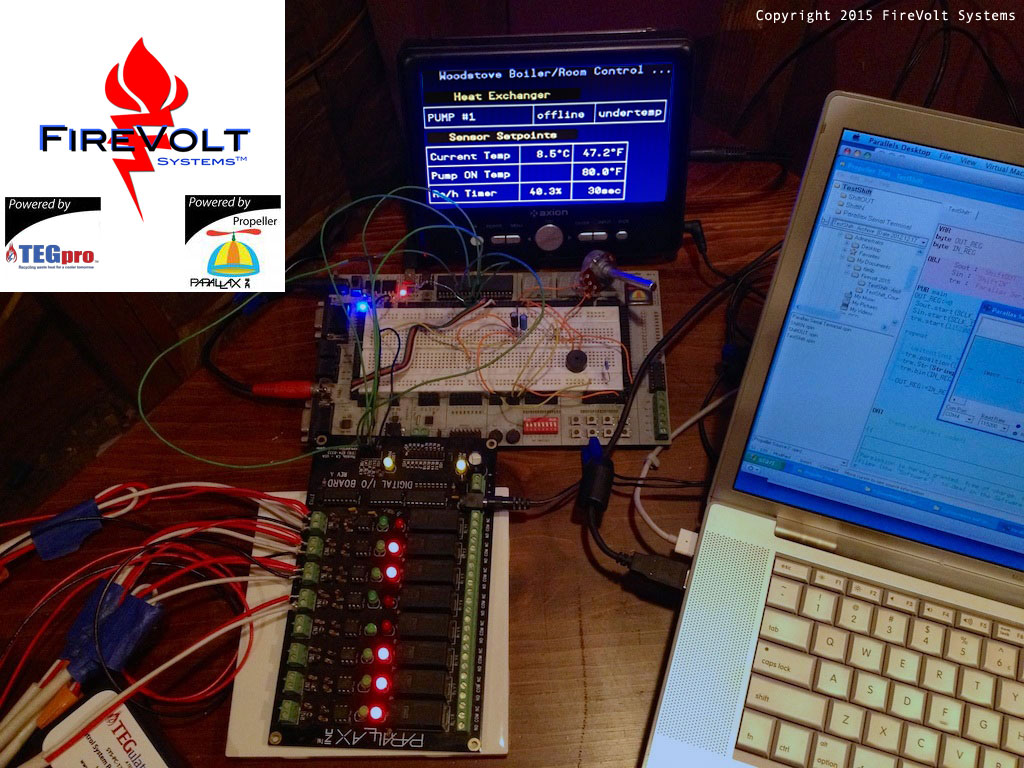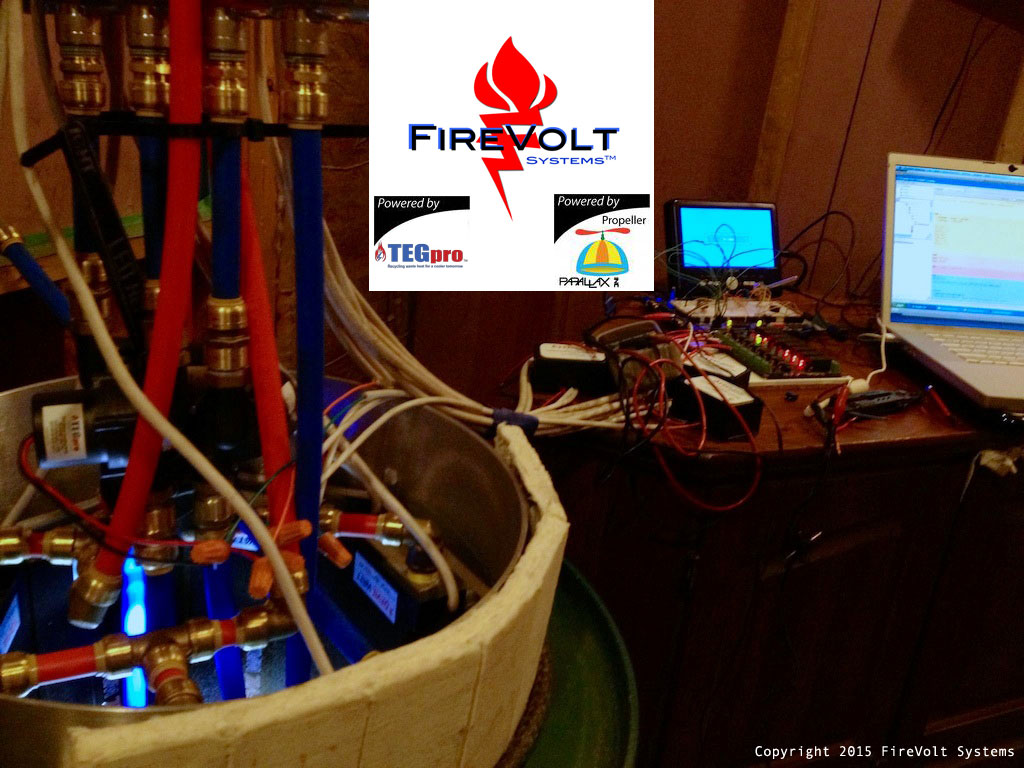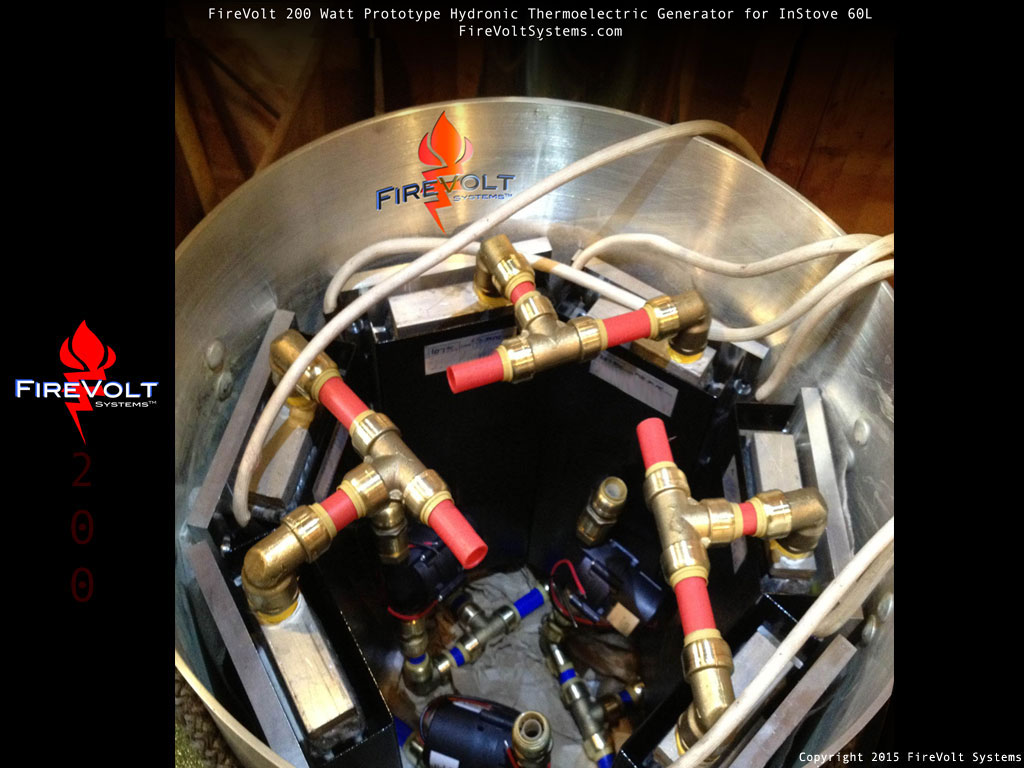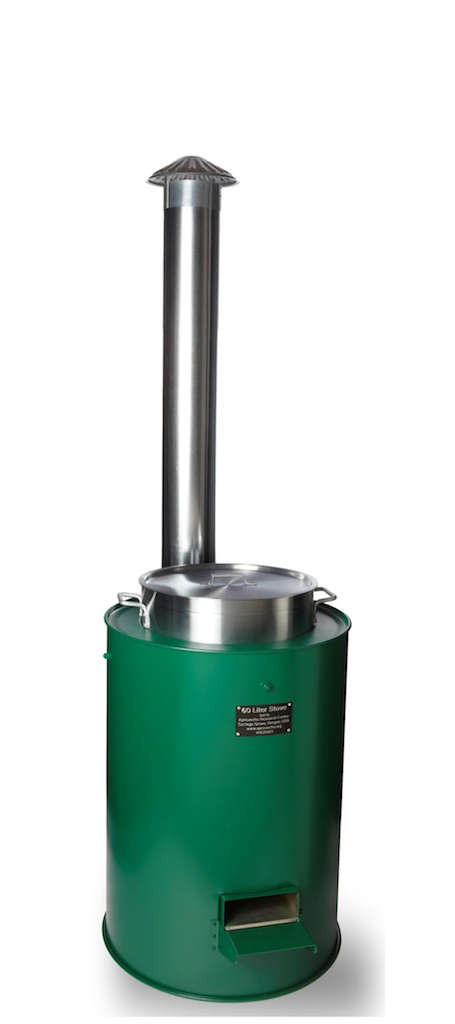200 Watt DC Thermoelectric Wood-Fired Propeller and Digital I/O based Load Manager
Hi folks. I'm new to the forums but have been playing with BS1, BS2 and Prop for a quite a while - love em! I am in active development on a load balancer and remote management solution based on the Propeller and the Digital I/O board. This system is self-powered (given properly dried wood or pellets), driven off my primary invention, the FireVolt 200 Thermoelectric/Hydronic Generator for the InStove rocket stove ( http://Instove.org )
Essentially, I'm on here to share, learn and gauge interest while taking the project to a deliverable kit form, should anyone want to dive in that is.
Here are some shots to put the thing in context.
The whole system (at this highly dense form-factor) is only possible on this stove's design and thermodynamic principles [ InStove 60L - image attached]
A high density water-cooled TEG array is configured inside what once was a 60L aluminum stock pot - subsequent water cooled plumbing and wiring is also arrayed in a high density but modular fashion.
The source TEG modules are TEGpro 35 Watt Water Cooled units. ( http://tegmart.com )
There are 7 of them in this configuration - 240 Watts total rated output.
Three 5 watt water pumps - also TEGpro
Three Tegulator (yup, TEGpro) pump controllers / energy harvesters
Ah - and of course the 60L InStove! But the result of all this - is all the domestic hot water you need, and a silent running, smoke-free, 90% emissions free, carbon neutral DC voltage output at 14.5v regulated, 200 watts, for as long as it's running.
FireVolt Systems can offer anyone that is interested, a discount off the Tegmart retail prices, as this will certainly aid my current dev costs as a reseller. Contact me directly if interested.
More pictures and soon, once I have cleaned the place up enough - demo video of the unit and some of the great things you can actually do with that much power - all from firewood.
Thanks for checking it out!
Oh and if you're really interested in our "Big Picture" plans - we've got a "test" Kickstarter up http://kck.st/1bkkH3R and either way, thank you for your time!
Kind regards,
Rob Parzek
The FireVolt Project




Essentially, I'm on here to share, learn and gauge interest while taking the project to a deliverable kit form, should anyone want to dive in that is.
Here are some shots to put the thing in context.
The whole system (at this highly dense form-factor) is only possible on this stove's design and thermodynamic principles [ InStove 60L - image attached]
A high density water-cooled TEG array is configured inside what once was a 60L aluminum stock pot - subsequent water cooled plumbing and wiring is also arrayed in a high density but modular fashion.
The source TEG modules are TEGpro 35 Watt Water Cooled units. ( http://tegmart.com )
There are 7 of them in this configuration - 240 Watts total rated output.
Three 5 watt water pumps - also TEGpro
Three Tegulator (yup, TEGpro) pump controllers / energy harvesters
Ah - and of course the 60L InStove! But the result of all this - is all the domestic hot water you need, and a silent running, smoke-free, 90% emissions free, carbon neutral DC voltage output at 14.5v regulated, 200 watts, for as long as it's running.
FireVolt Systems can offer anyone that is interested, a discount off the Tegmart retail prices, as this will certainly aid my current dev costs as a reseller. Contact me directly if interested.
More pictures and soon, once I have cleaned the place up enough - demo video of the unit and some of the great things you can actually do with that much power - all from firewood.
Thanks for checking it out!
Oh and if you're really interested in our "Big Picture" plans - we've got a "test" Kickstarter up http://kck.st/1bkkH3R and either way, thank you for your time!
Kind regards,
Rob Parzek
The FireVolt Project






Comments
Consider a kit of just (vitamin) parts and plans for the genral design, and sell for the cost of the parts. But this would have to be about 1/10th the cost for me to back the first kit on kickstarter.
Thank you for the feedback and suggestions prof_braino! I certainly can appreciate the price point on the TEG hardware being steep on the full-sized systems (though pricing is competitive with current industry offerings, solid state TEG units aren't cheap). The InStove itself is the primary cost on the $1000 experimenters kit and, based on my knowledge of their manufacturing process, have already lowered the margin on that about as far as it can go. However, the stove does have a 10 year service life, considering the investment. Also I should note that the TEG hardware has a service life very similar if not better than, LED bulbs, over 200,000 hours. This means that any TEG unit invested in should last somewhere around 20 years.
If I were to offer the 10 and 15 watt stovetop and open gas flame versions as (vitamin) parts - lower than retail, yet still get a little in the bank for development, that would still bring in the lowest backer at or over $200 (for a fully operational TEG generator).
Would you like to see raw components offered as rewards as well, like The TEG tiles themselves, or energy harvester components as stand alone rewards? Again, thank you for the time and consideration.
Most LEDs that I have seen claim around 20,000 hr service life, up to a max at around 50,000 hrs. Where can I find 200,000+ hr LEDs???
W9GFO you make an excellent query! I should have phrased and compared that differently. Also as you likely know, thermal management is a huge factor in realizing that actual service life, however I *do* know where you can get TEG's that last that long : ) And they *like* being hot
From experience I can state that the majority of leds will last 200,000 hours (23.83 years) or more as long as the current is not too high. I look after quite a few instruments that were installed in the 80's, use leds as indicators, and are left on 24/7. Replacing a burned out led has been a very rare occurrence, at most a fraction of one percent of the total number of leds in those instruments. Wish that more things were even close to that level of reliability.
At least make service life comparisons using components of similar power. Comparing a 35W TEG to a derated milliwatt LED is not a fair comparison and I consider it deceptive.